esa
Latest
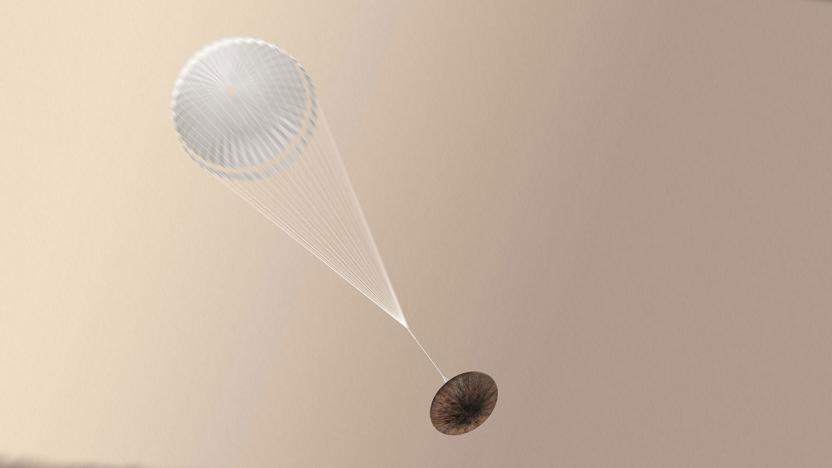
The ESA's ExoMars mission lander is still missing
The European Space Agency is still in the midst of investigating what happened to ExoMars' Schiaparelli lander, which seemed to disappear 50 seconds before it was supposed to land. At the presscon the agency held earlier, Andrea Accomazzo, ESA's head of planetary missions, said the ExoMars team already downloaded the data Schiaparelli sent to its mothership before it vanished. Unfortunately, we'll have to wait a bit more to get the whole picture, because it'll take some time to analyze the information.

ICYMI: The ESA's mission to Mars launches next week
try{document.getElementById("aol-cms-player-1").style.display="none";}catch(e){}Today on In Case You Missed It: The European Space Agency and Russia are joining up to launch their ExoMars project next week, which will look for traces of extraterrestrial life on the red planet. Meanwhile, a newer kind of wind energy harvester is being installed in Paris, where leaves on a fake tree can capture energy in breezy conditions.
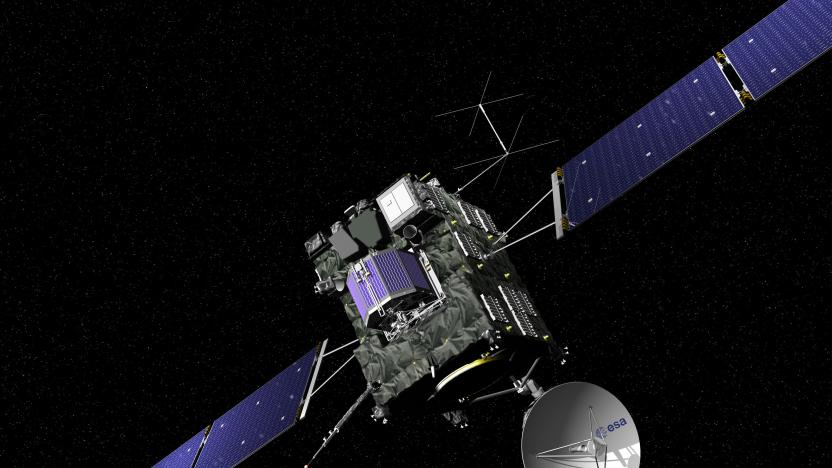
Rosetta probe's love affair with a comet ended predictably
Goodbye, Rosetta. After 12 years of getting up close and personal with Comet 67P, your service has come to an end. At approximately 7:19 am Eastern the spacecraft descended upon the comet one last time, snapping pictures and analyzing gases before crashing into its final resting place, according to NASA's Jet Propulsion Lab. Reuters reports that scientists in the control room clapped and hugged after screens indicated a loss of communication. Rosetta followed the comet around for over 6 billion kilometers since 2004. Shine on, you crazy diamond.

NASA observes possible water geysers on Europa
Hubble's extended mission continues to pay off: NASA announced today that a team of astronomers using the space telescope have spotted what appear to be plumes of high-altitude water vapor spewing from the icy surface of Jupiter's moon Europa. Researchers have long believed that Europa holds a global ocean beneath a thick, potentially miles-deep, layer of ice, but the new observation indicated it could be possible to sample the ocean without landing or drilling on the moon itself.
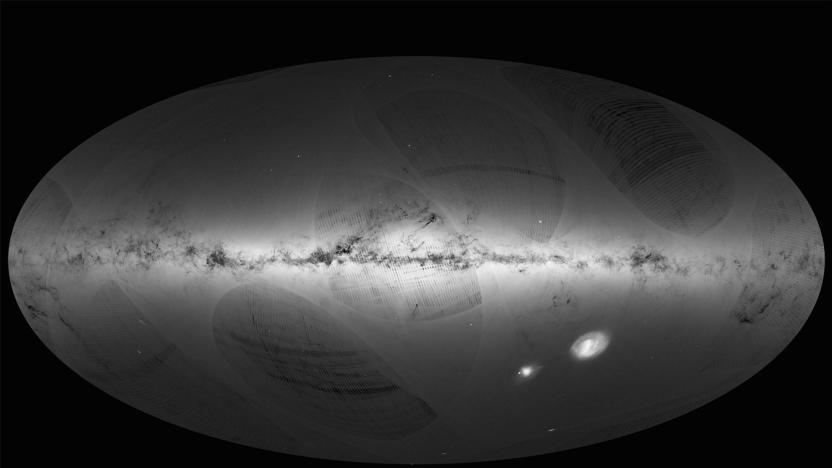
ESA's Gaia satellite mapped a billion stars in the Milky Way
The European Space Agency launched the Gaia satellite and its one-billion-pixel camera to space back in 2013. Gaia has been mapping the Milky Way ever since, and now the ESA has released a 3D map featuring over a billion stars -- we've never seen 400 million of those before -- based on the data it collected from July 2014 to September 2015. As you can see above, it shows how dense a billion stars look. Don't dwell on those weird lines cocooning the structure too much: they're merely artefacts from the way the satellite scans the galaxy.
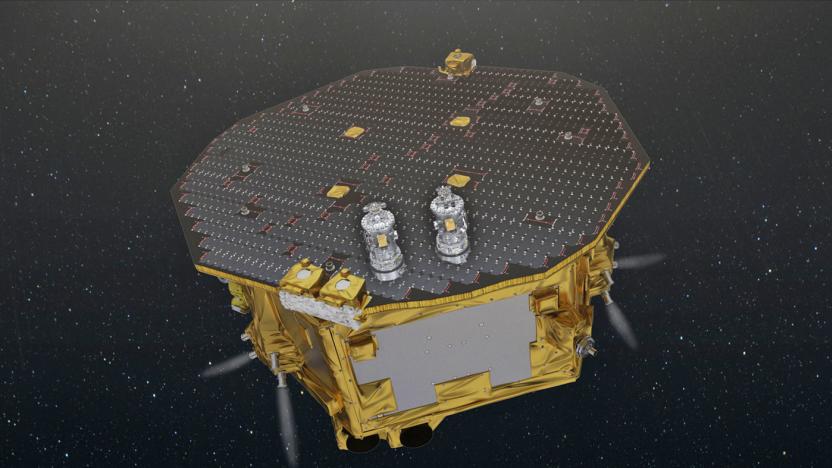
NASA plans to rejoin the ESA's gravitational waves project
NASA was supposed to be the European Space Agency's partner in the quest to measure gravitational waves, but it had to drop out in 2011 due to budgetary constraints. According to Science, though, NASA officials changed their minds after a team of scientists confirmed the existence of these distortions in the fabric of space-time. At the 11th symposium to discuss the status of ESA's Laser Interferometry Space Antenna (LISA) project, NASA said it wants to patch things up with its European counterpart and rejoin the mission as a major partner.
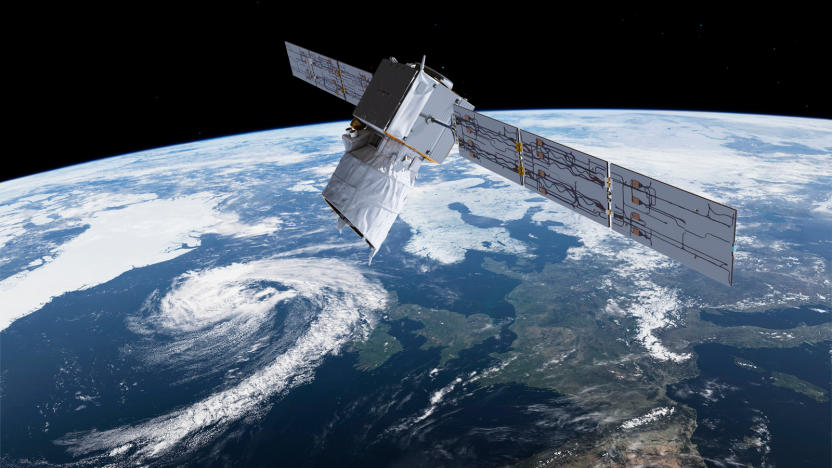
Europe's cutting-edge wind satellite should launch in 2017
Humanity is about to deepen its understanding of Earth's winds. The European Space Agency has secured a rocket launch deal for its wind-tracking Aeolus satellite, which is now expected to enter orbit before the end of 2017. The once-problematic spacecraft (technical issues postponed its 2015 launch) will be the first to profile wind on a worldwide scale thanks to the novel use of ultraviolet lidar in space. By bouncing laser light off of atmospheric air, dust and water, Aeolus will measure everything from cyclones to the presence of aerosols.

A tiny space pebble just put a huge dent in an ESA satellite
The European Space Agency's Copernicus Sentinel-1A satellite has new 40cm dent on one of its solar wings -- and it was caused by a tiny millimetre-size piece of space debris. The impact was discovered with the Sentinal-1A reported a slight power reduction last month. Onboard cameras quickly found the micrometeoroid impact, pictured above. Don't worry, the ESA says the satellite is fine, but the impact serves as a reminder: at orbital velocity, tiny objects can cause major damage.
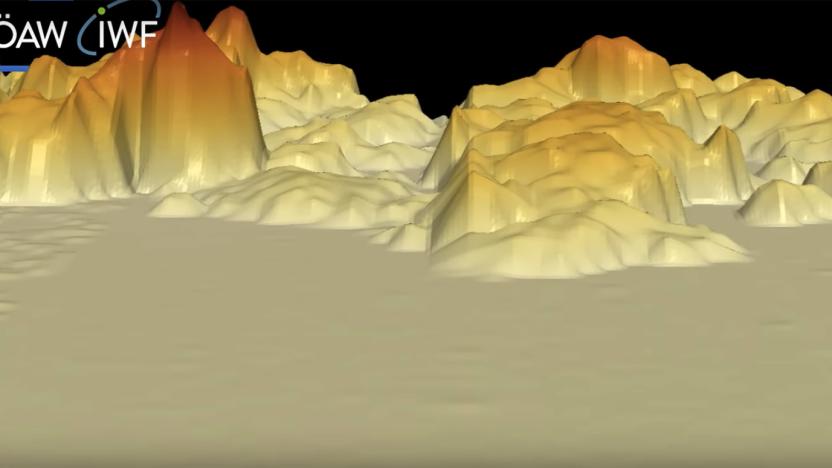
Rosetta 3D images comet dust before it bids farewell
Rosetta's scientists are doing every bit of science they can before the European Space Agency crashes the probe into the comet it's been studying. In fact, the spacecraft's Micro-Imaging Dust Analysis System (MIDAS) has just analyzed dust samples Rosetta collected from Comet 67P/Churyumov-Gerasimenko from November 2014 to February 2015. Mark Bentley, MIDAS' principal investigator, explained that "we need to understand the structure of the smallest grains and how they are built" to understand how comets are formed. Comet dust could also shed light on the beginnings of our solar system.

The European Space Agency will land on Mars in October
Nearly 13 years after the British spacecraft Beagle 2 went missing on Mars, the European Space Agency's Schiaparelli module will touch down on the red planet -- assuming everything goes according to plan, that is. The module, which launched with the ExoMars Trace Gas Orbiter in March, will serve primarily as a test bed for the descent and landing systems and is expected reach the surface on October 19th.

ESA plans to study the wind by shooting lasers from space
The European Space Agency plans to send two potent Aladin lasers into space next year, both aimed at studying the wind. It's part of the ESA's Living Planet program aimed at better understanding hugely influential natural phenomena, like magnetism and wind. This time, it's concerned with the latter.

Europe's space agency will beam your message to Polaris
The European Space Agency (ESA) is collecting messages from people around the world to send to a place we'll never set foot on: Polaris. All you've got to do to send your thoughts to the North Star is head over to the "A Simple Response to an Elemental Message" project website and type in your response to the question "How will our present environmental interactions shape the future?"

Comet lander Philae says goodbye as communications are cut
Farewell Philae, it was a short but wild ride. In February, mission controllers said goodbye to the comet lander, but kept comms open with mother ship Rosetta on the slight chance it might wake up. "It's cold & dark on #67P ... but I won't give up just yet," Philae tweeted hopefully. However, controllers elected to cut Rosetta's "ESS" lander radio at 5AM ET today to preserve its precious remaining power.
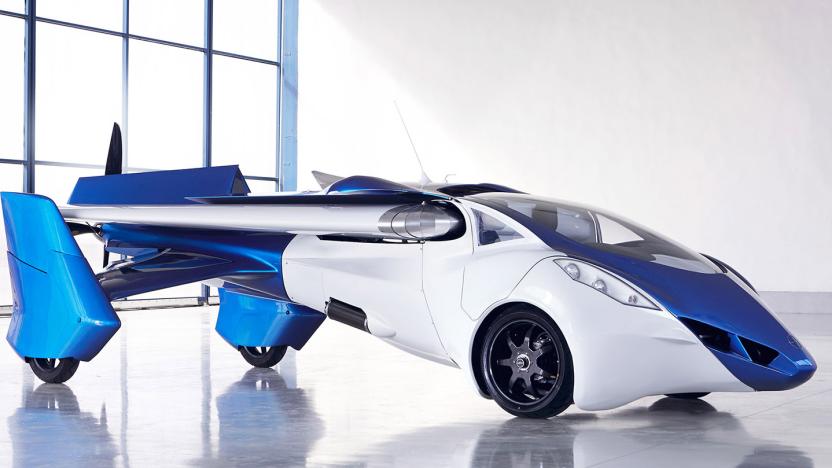
Inhabitat's Week in Green: Flying cars and an urban underground park
The Tesla Model X is the best car in its class - but it's also prohibitively expensive with a MSRP of $83,000. That's set to change, as Tesla just launched a new version of its electric SUV that is $9,000 cheaper. If you're holding out for a flying car, you won't have to wait much longer - Aeromobile just unveiled a brand new prototype and announced plans to launch a commercial flying vehicle by 2017. The European Space Agency backed a new hypersonic plane that will be able to travel from London to Sydney in four hours flat. And a Welsh company created a truck that carries its own road surface, lays it down, and then picks it back up.
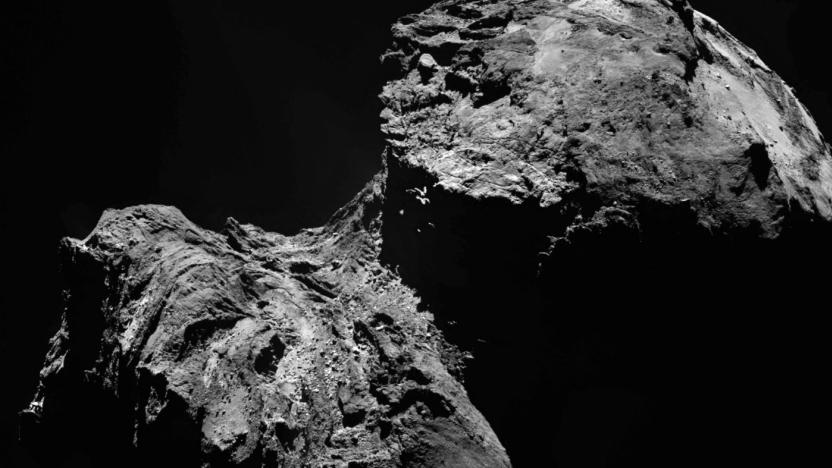
Rosetta will crash into its comet and die on September 30th
Farewell, young spacecraft. The European Space Agency's Rosetta probe has been surveying Comet 67P (or Churyumov-Gerasimenko) for the past 12 years, and on September 30th it will crash into the space rock and end its mission. Rosetta is nearing the orbit of Jupiter, which means it's running short on solar power and bandwidth required to downlink necessary data.
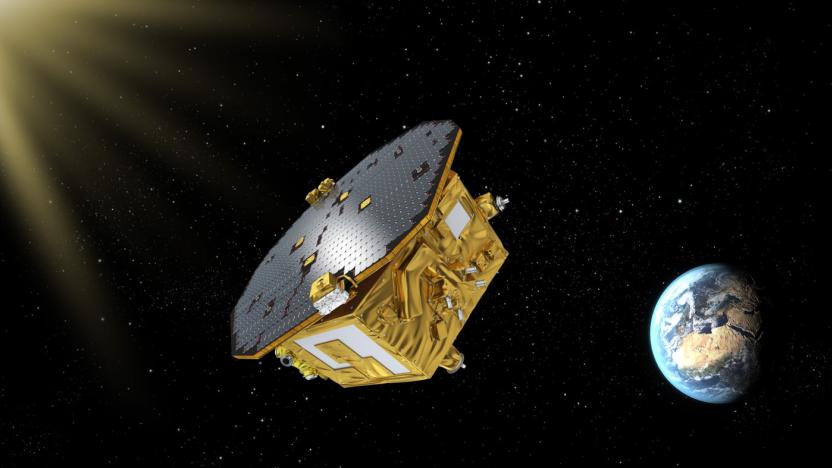
LISA Pathfinder 'listens' to the universe while in freefall
Back in December, the European Space Agency (ESA) launched the Laser Interferometer Space Antenna (LISA) Pathfinder spacecraft. Today, it's finally positioned itself in gravitational stasis at the first Langrangian Point (L1) that lets its instruments hang in freefall. This will hopefully filter out extraneous cosmic noise so the spacecraft can achieve its mission: measuring gravitational waves, the "sound" of the universe.

Hubble shows the universe is expanding faster than we thought
New measurements from the Hubble telescope suggest the universe is expanding between five and nine percent faster than scientists initially thought. NASA and the ESA measured the distance to stars in 19 galaxies outside of our own and compared the data to the cosmic microwave measurements taken by the Planck and WMAP probes -- and they didn't tally quite like they should. This potentially puts a question mark above at least a part of science's most enduring tenet -- Einstein's theory of relativity.
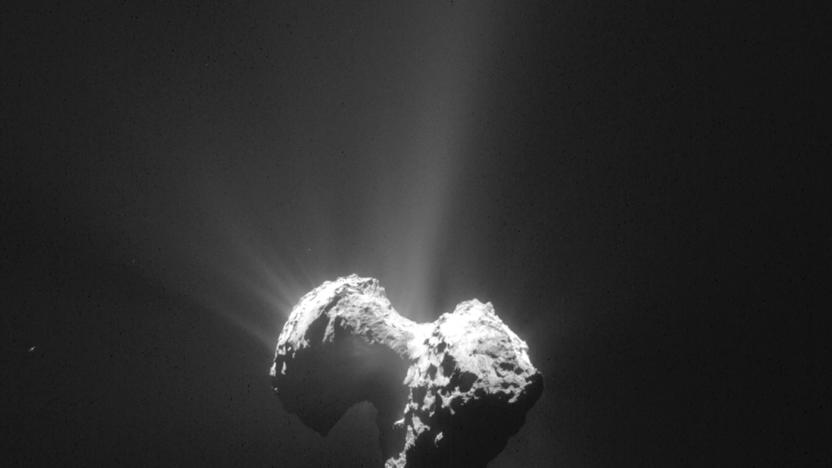
Rosetta finds key building blocks of life in comet dust
The amino acid glycine, one of the key building blocks of life as we know it, has been found in the "fuzzy atmosphere" of comet 67P Churyumov-Gerasimenko, the European Space Agency announced today. The findings mean it is likely the glycine was carried through space on the surface of the comet.

E3 will hold a public gaming event this year
For years, E3 has largely been limited to game industry tradespeople and the press. That's somewhat necessary (it's difficult to wade through the show as it is), but it also locks out thousands of players dying to get a peek at the future of their favorite hobby. Thankfully, that's about to change: the Entertainment Software Association has announced E3 Live, a free public event that gives you a taste of what you're missing. The ticketed gathering, which runs alongside E3 itself (June 14th through 16th), promises the opportunity to "test-drive" new games, meet developers in person and try new experiences before anyone else.
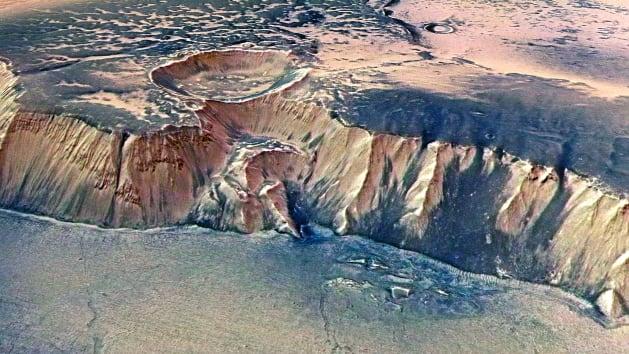
Ancient mega-tsunamis hint at cold Martian oceans
3.4 billion years ago, a meteorite smashed into the northern plains of Mars, where an ancient ocean once stood. Its impact threw up a massive wall of liquid water that scarred the surrounding landscape with backwash channels as the water poured back into the Martian sea. A few million years later, after the Red Planet had cooled significantly, another huge chunk of space rock tore into Mars -- however, this time, the resulting tsunami was made of ice blobs that simply stuck wherever they landed rather than return to the sea.











